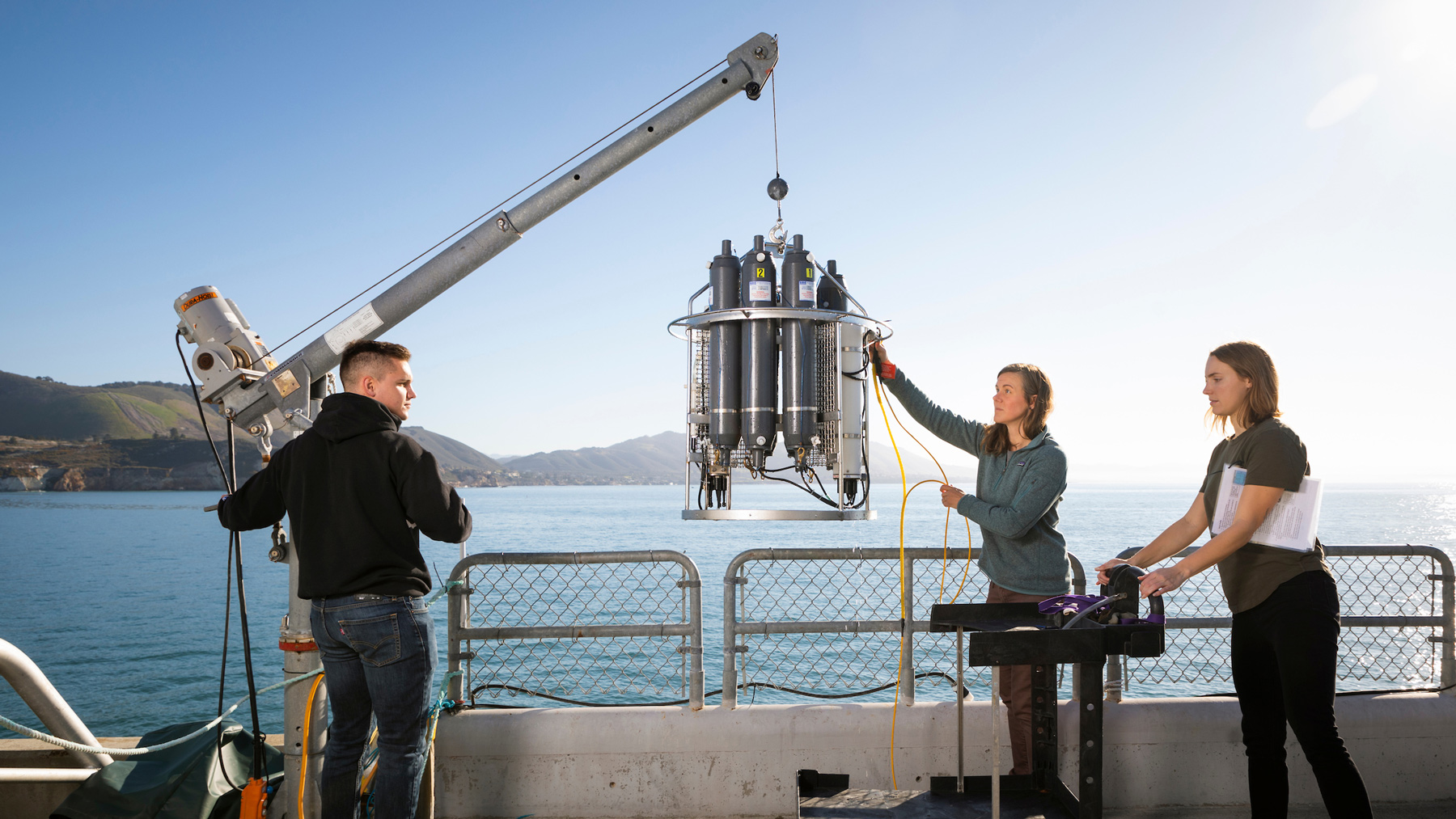Determined Discovery
Get to know a few research projects that made major strides in 2020 despite the pandemic.

With a firm commitment to scholarship and a slate of promising projects gaining ground each day, Cal Poly researchers aren’t shying away from the hurdles of this unprecedented chapter in history or the opportunity it brings to imagine a brighter future. Here are just a few of the scholarly highlights announced in the last year:
• Cal Poly established the Office of Student Research in January 2020 with a specific mission of improving equity of access to diverse research opportunities and boosting submission success for grant proposals leveraging student expertise.
• Chemistry professor Emily Bockmon and student researchers measure the effects of ocean acidification by analyzing the pH at the Cal Poly Pier in Avila Beach and the estuary in Morro Bay.
• A study led by a Cal Poly researcher Jennifer Phillips quantified how birdsongs changed in the Bay Area during the first wave of lockdowns. More research about birds found how noise and light alter their reproductive patterns and how their song benefits humans.
• In a virtual format, the BEACoN Mentoring program saw roughly 500 student applications for research positions led by faculty tackling projects with an equity focus.
• Lizabeth Thompson analyzed how the pandemic impacted engineering programs at Cal Poly and CSU Los Angeles to better understand resilience, effective interventions and equity in higher education.
• A research team made batches of hand sanitizer for campus in May.
• Philosophy professor Ryan Jenkins and fellow researchers released a guide on artificial intelligence and predictive policing, which is already used in more than 60 police departments.
• College of Science and Mathematics researchers found that the Central Coast’s offshore winds could be a promising source of renewable energy as California aims to meet bold renewable energy targets by 2045.


